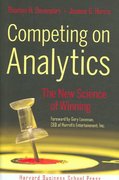(Measuring growth) Solarpower Systems earned $20 per share at the beginning of the year and paid out $10 in dividends to shareholders (50, Do = $10) and retained $10 to invest in new projects with an expected return on equity of 21 percent. In the future, Solarpower expects to retain the same dividend payout ratio, expects to earn a return of 21 percent on its equity invested in new projects, and will not be changing the number of shares of common stock outstanding. a. Calculate the future growth rate for Solarpower's earnings b. If the investor's required rate of return for Solarpower's stock is 14 percent, what would be the price of Solarpower's common stock? c. What would happen to the price of Solarpower's common stock if it raised its dividends to S12 and then continued with that same dividend payout ratio permanently? Should Solarpower make this change? (Assume that the investor's required rate of return remains at 14 percent.) d. What would happened to the price of Solarpower's common stock if it lowered its dividends to 32 and then continued with that same dividend payout ratio permanently? Does the constant dividend growth rate model work in this case? Why or why not? (Assume that the investor's required rate of return remains at 14 percent and that all future new projects will earn 21 percent.) What is the future growth rate nel (Measuring growth) Solarpower Systems earned $20 per share at the beginning of the year and paid out $8 in dividends to shareholders (50. Do = $8) and retained S12 to invest in new projects with an expected return on equity of 19 percent. In the future. Solarpower expects to retain the same dividend payout ratio, expects to earn a return of 19 percent on its equity invested in new projects, and will not be changing the number of shares of common stock outstanding. a. Calculate the future growth rate for Solarpower's earnings. b. If the investor's required rate of return for Solarpower's stock is 14 percent, what would be the price of Solarpower's common stock? c. What would happen to the price of Solarpower's common stock if it raised its dividends to $13 and then continued with that same dividend payout ratio permanently? Should Solarpower make this change? (Assume that the investor's required rate of return remains at 14 percent.) d. What would happened to the price of Solarpower's common stock if it lowered its dividends to $2 and then continued with that same dividend payout ratio permanently? Does the constant dividend growth rate model work in this case? Why or why not? (Assume that the investor's required rate of return remains at 14 percent and that all future new projects will earn 19 percent.)








